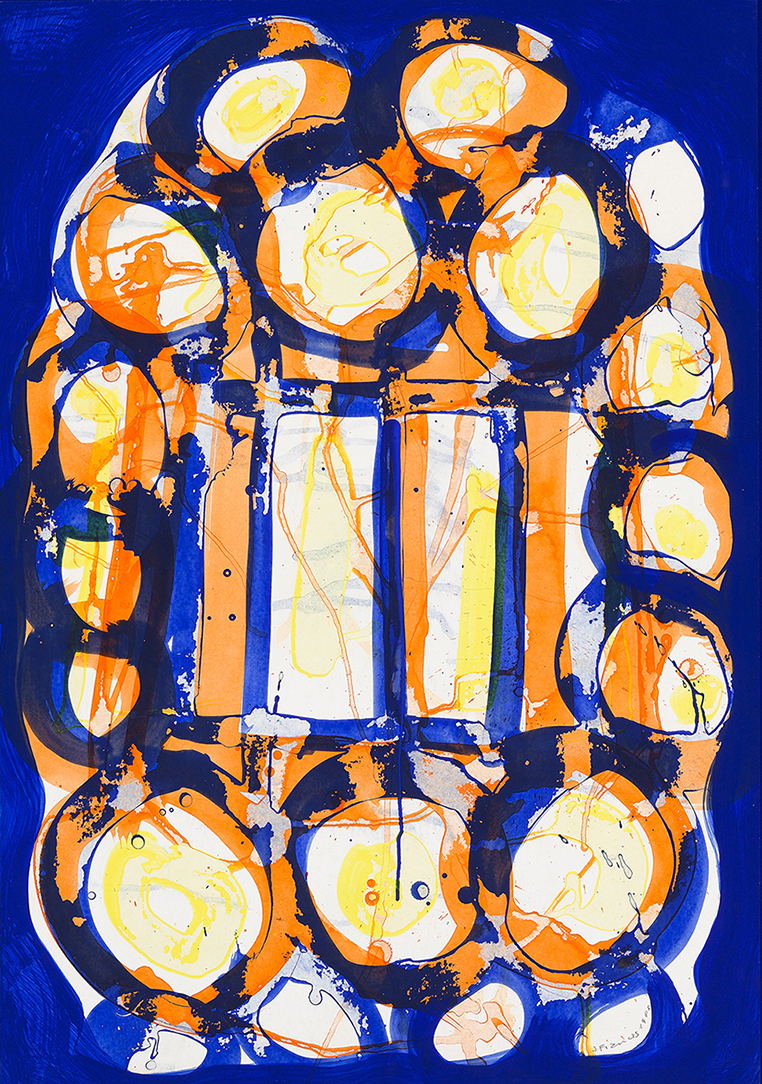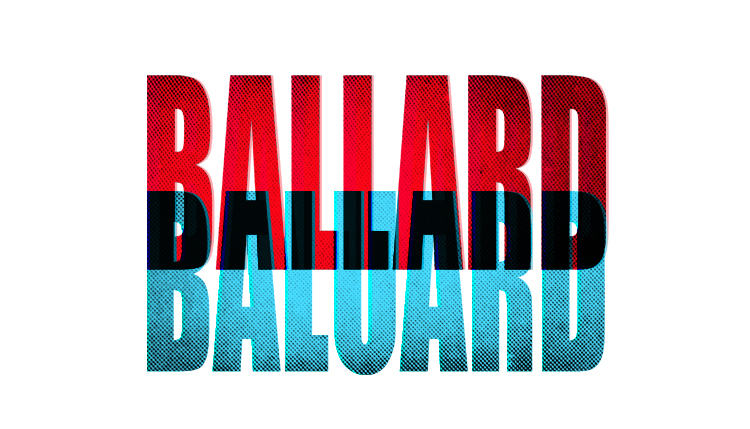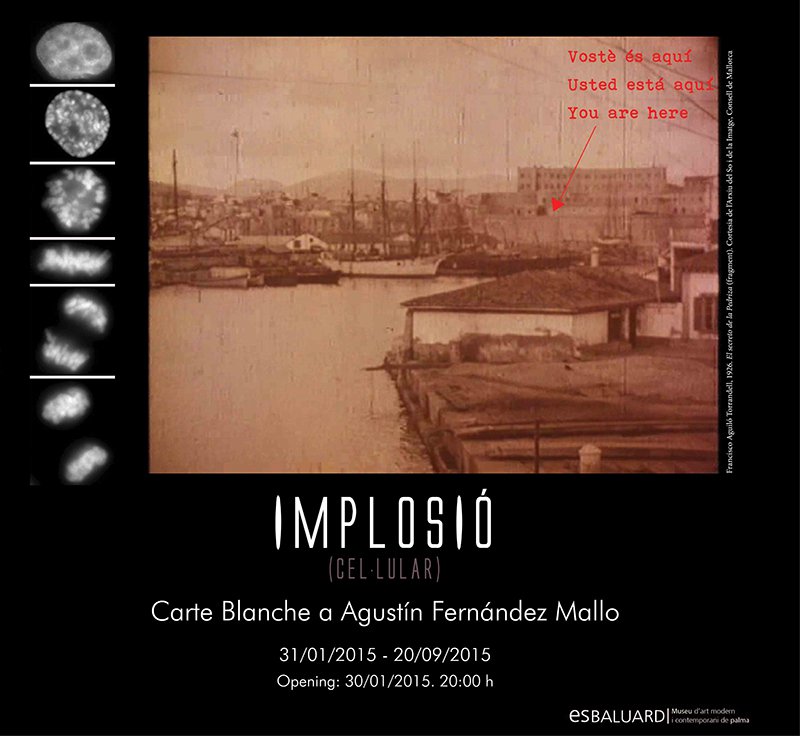
- Artist:
- Juana Francés
- Date:
- 1985
- Technique:
- Mixed media on wood
- Dimensions:
- 130 x 100 cm
- Origin:
- Es Baluard Museu d'Art Contemporani de Palma, donated by Fundació d'Art Serra
- Registration number:
- 106
- Acquisition year:
- 2003
- Exposed:
- Yes
In this painting on board, we find a mature creation by Juana Francés. Vibrantly colourful, it is a geometric composition in which the artist combines rectangular and circular forms through a colourful, intense palette of solar tonalities.
From 1980 on, this painter from Alicante reached a mature phase of her career, abandoning any type of previous figuration, and devoted herself to working on the pictorial event. It is worth pointing out the influence of the Spanish art scene, and the political moment Spain was going through with the arrival of democracy, in her production. Like so many other artists of her generation, throughout the 1980s she would focus her attention on painting itself, researching possibilities and media such as engraving, for example.
From 1980 to 1985, the year in which she produced Untitled, the central themes of her creation would be underwater and celestial landscapes, water and the movement of the waves, as well as the sky, kites and how light reflects and multiplies through the water on the seabed. This is why we will see the use of oval and square shapes, as is the case of the painting we are concerned with, using an intense, solar, near-luminous colouring, with sunflower-like oranges and yellows, accompanied by turquoise-hued greens and blues.
I.LL.
Juana Francés worked and lived in Alicante and later in Madrid. Initially self-taught, she studied at the Real Academia de Bellas Artes de San Fernando in Madrid. She devoted her career to researching the formats and resources of the pictorial medium, changing with ease between abstraction and figuration, which she understood as complementary, and not antagonistic positionings. She moved on from her early creations, which were figurative with large human presences, to an explicitly informalist phase in which she would become a member of the El Paso group, the only woman member of this art collective. Later, she would become implicated in a somewhat figurative period and delve deeper into the three-dimensional world with a feísta[1] appearance, to resume a vibrant, casual colouring in her final phase, which ultimately turned into a return to severe chromatism.
I.LL.
[1] Translator’s note: from feísmo, a genre celebrating the aesthetics of ugliness or grotesqueness



